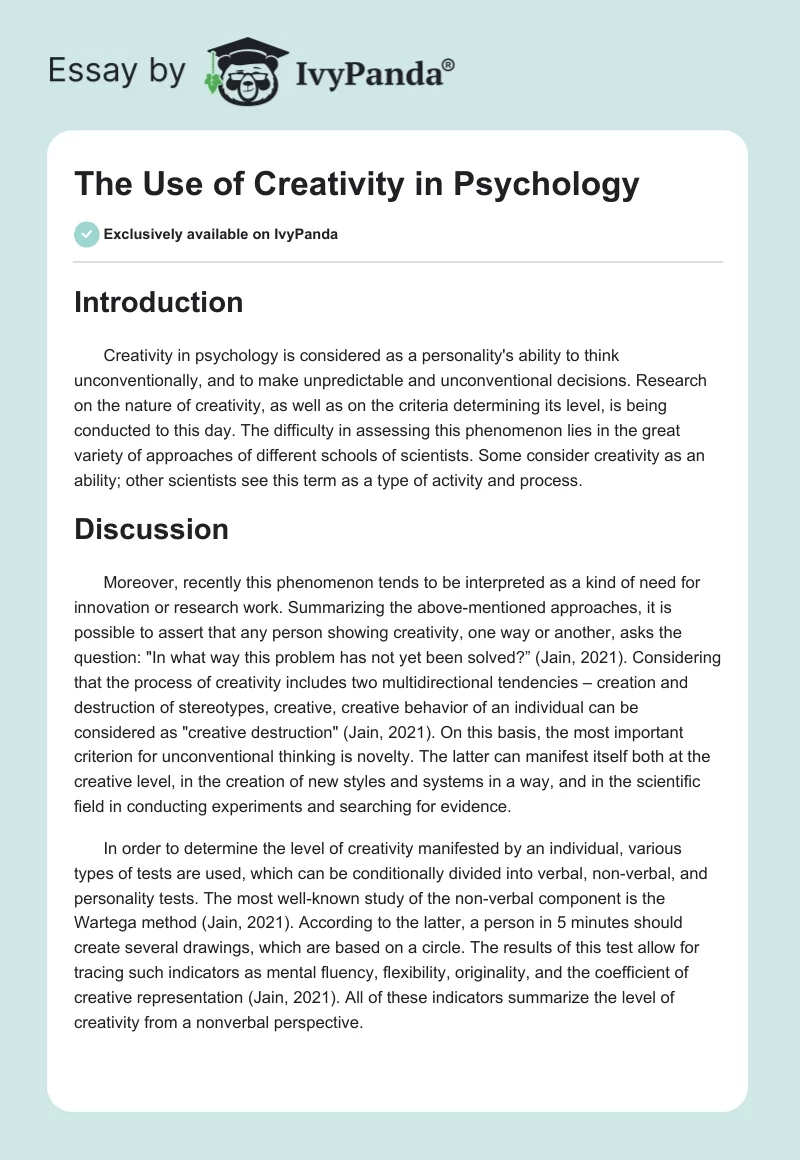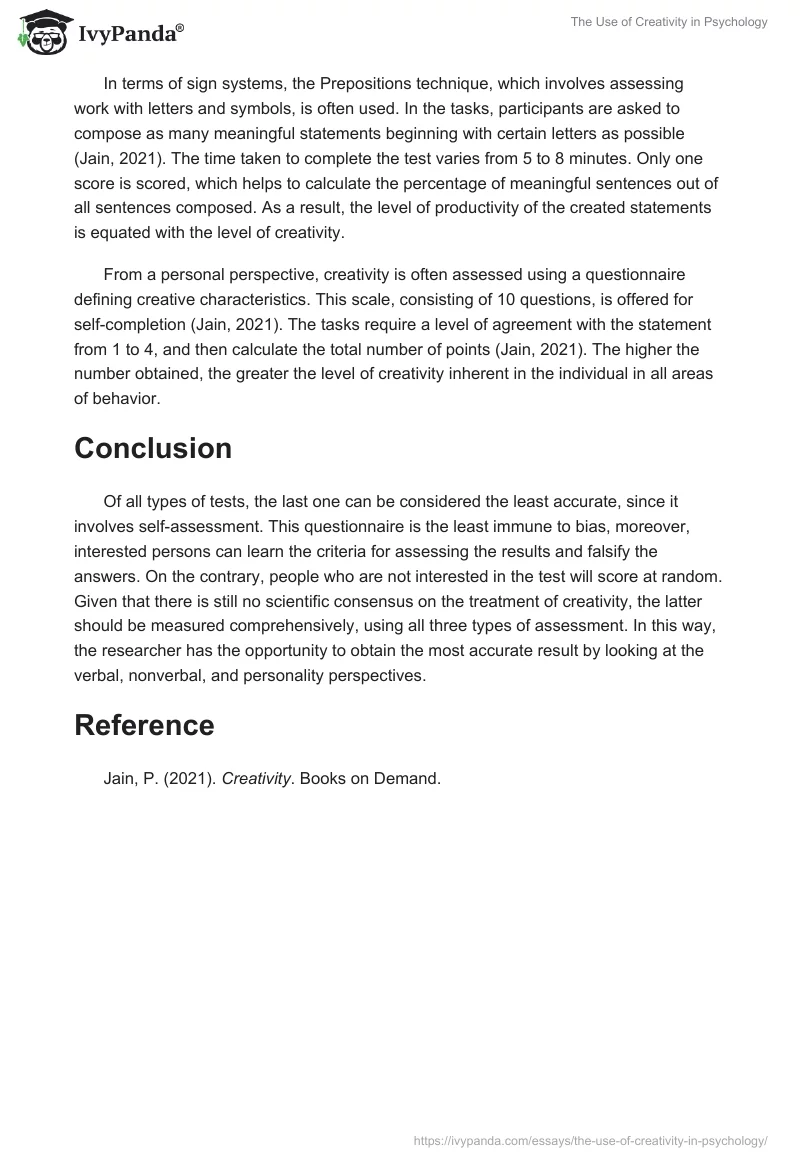Introduction
Creativity in psychology is considered as a personality’s ability to think unconventionally, and to make unpredictable and unconventional decisions. Research on the nature of creativity, as well as on the criteria determining its level, is being conducted to this day. The difficulty in assessing this phenomenon lies in the great variety of approaches of different schools of scientists. Some consider creativity as an ability; other scientists see this term as a type of activity and process.
Discussion
Moreover, recently this phenomenon tends to be interpreted as a kind of need for innovation or research work. Summarizing the above-mentioned approaches, it is possible to assert that any person showing creativity, one way or another, asks the question: “In what way this problem has not yet been solved?” (Jain, 2021). Considering that the process of creativity includes two multidirectional tendencies – creation and destruction of stereotypes, creative, creative behavior of an individual can be considered as “creative destruction” (Jain, 2021). On this basis, the most important criterion for unconventional thinking is novelty. The latter can manifest itself both at the creative level, in the creation of new styles and systems in a way, and in the scientific field in conducting experiments and searching for evidence.
In order to determine the level of creativity manifested by an individual, various types of tests are used, which can be conditionally divided into verbal, non-verbal, and personality tests. The most well-known study of the non-verbal component is the Wartega method (Jain, 2021). According to the latter, a person in 5 minutes should create several drawings, which are based on a circle. The results of this test allow for tracing such indicators as mental fluency, flexibility, originality, and the coefficient of creative representation (Jain, 2021). All of these indicators summarize the level of creativity from a nonverbal perspective.
In terms of sign systems, the Prepositions technique, which involves assessing work with letters and symbols, is often used. In the tasks, participants are asked to compose as many meaningful statements beginning with certain letters as possible (Jain, 2021). The time taken to complete the test varies from 5 to 8 minutes. Only one score is scored, which helps to calculate the percentage of meaningful sentences out of all sentences composed. As a result, the level of productivity of the created statements is equated with the level of creativity.
From a personal perspective, creativity is often assessed using a questionnaire defining creative characteristics. This scale, consisting of 10 questions, is offered for self-completion (Jain, 2021). The tasks require a level of agreement with the statement from 1 to 4, and then calculate the total number of points (Jain, 2021). The higher the number obtained, the greater the level of creativity inherent in the individual in all areas of behavior.
Conclusion
Of all types of tests, the last one can be considered the least accurate, since it involves self-assessment. This questionnaire is the least immune to bias, moreover, interested persons can learn the criteria for assessing the results and falsify the answers. On the contrary, people who are not interested in the test will score at random. Given that there is still no scientific consensus on the treatment of creativity, the latter should be measured comprehensively, using all three types of assessment. In this way, the researcher has the opportunity to obtain the most accurate result by looking at the verbal, nonverbal, and personality perspectives.
Reference
Jain, P. (2021). Creativity. Books on Demand.


